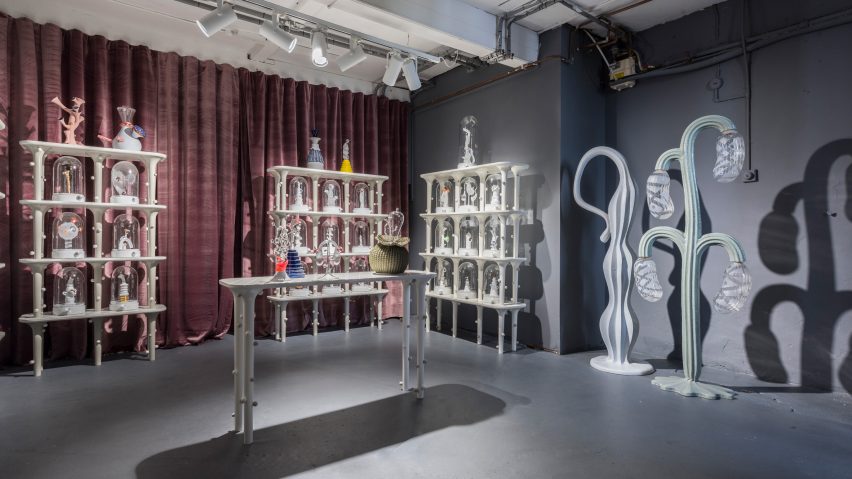
Matteo Cibic envisions plants of the future for London Design Festival exhibition
Italian designer Matteo Cibic imagined futuristic plants when creating these bizarre-looking ceramic and glass objects that puff out perfume, which London gallery Seeds is showcasing during London Design Festival.
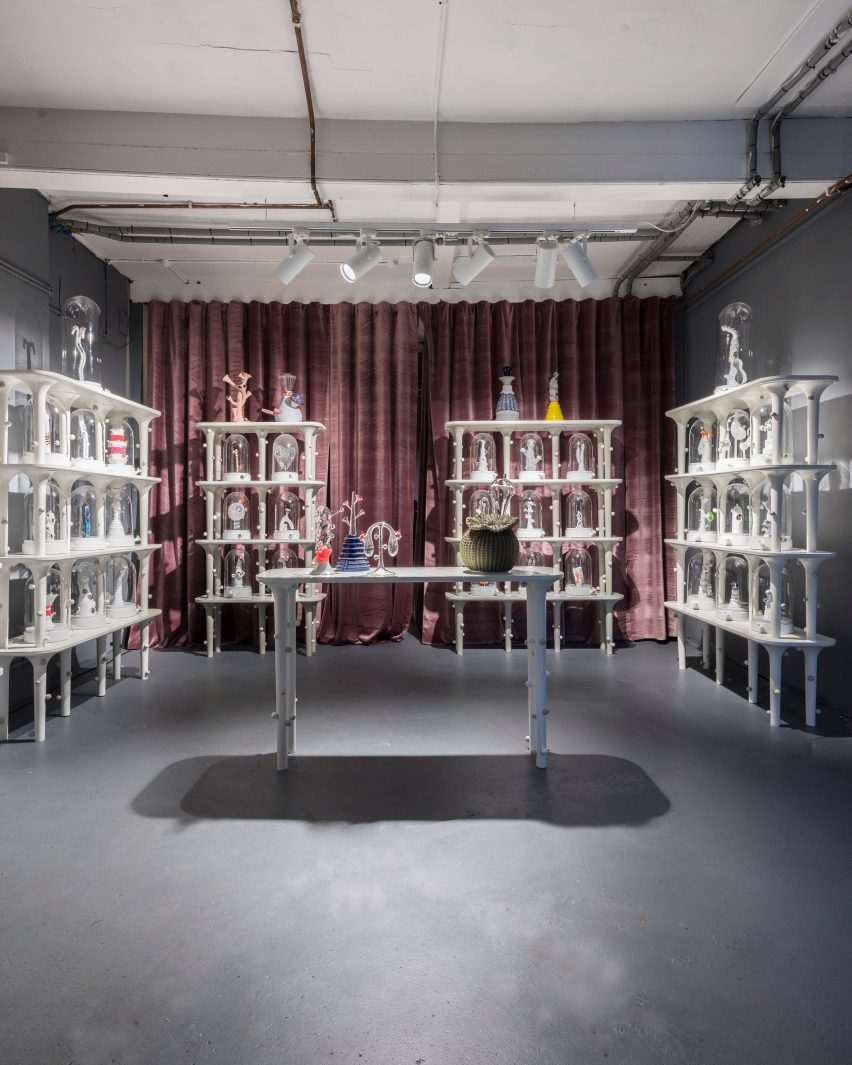
Cibic envisions a future where products such as knitwear, rubber and chewing gum are not manufactured by machines, and could instead be produced by plants.
He has created ceramics to show what these plants and smell might look – and is presenting them in an exhibition called Dermapoliesis, on show in the Brompton Design District throughout this year's London Design Festival.
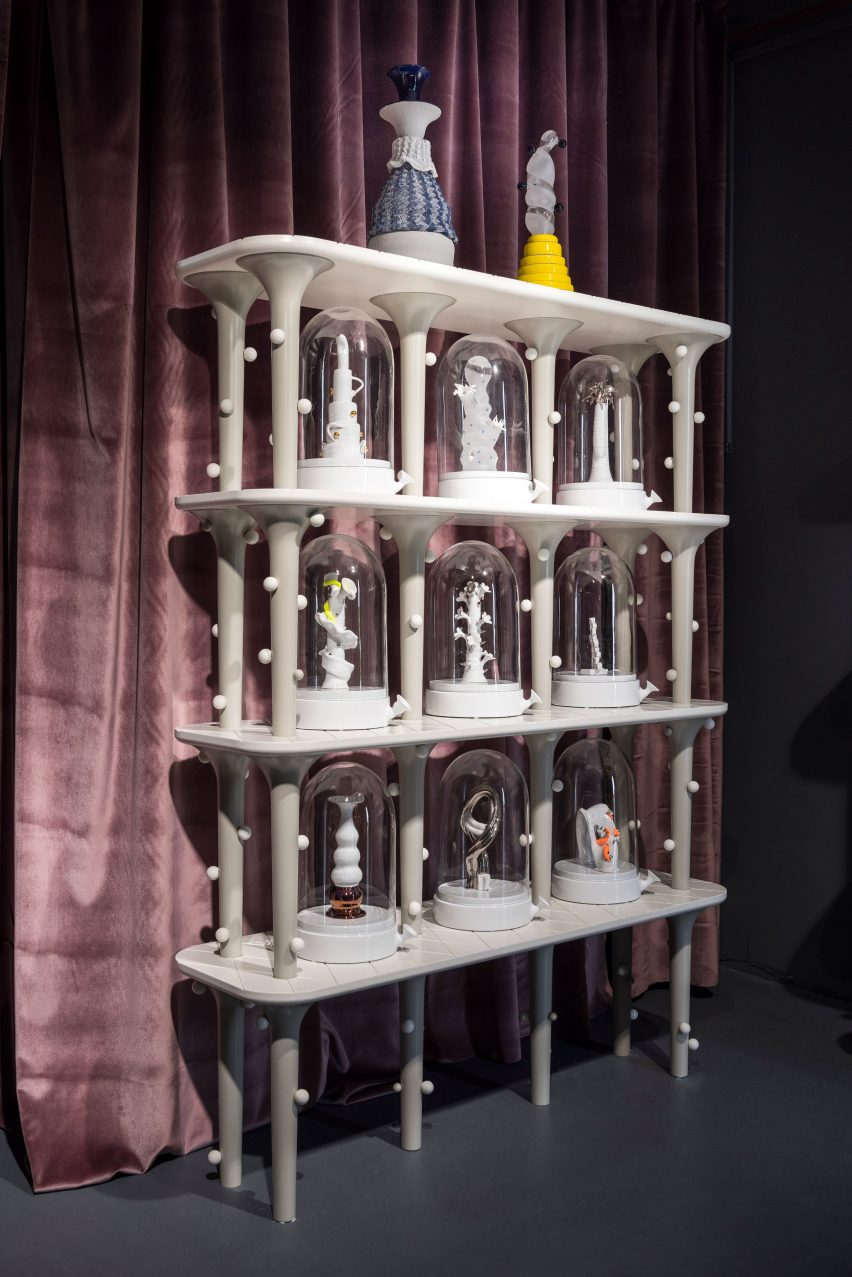
"We are used to sourcing raw materials on the other side of the world, shipping them to other continents and processing them in very intricate ways," Cibic told Dezeen. "Why can't we imagine a new way of producing food and products?"
"Can we transform plants into new 'organic machines' that will produce processed products instead of raw materials, directly in our courtyard or in our living room?" he added.
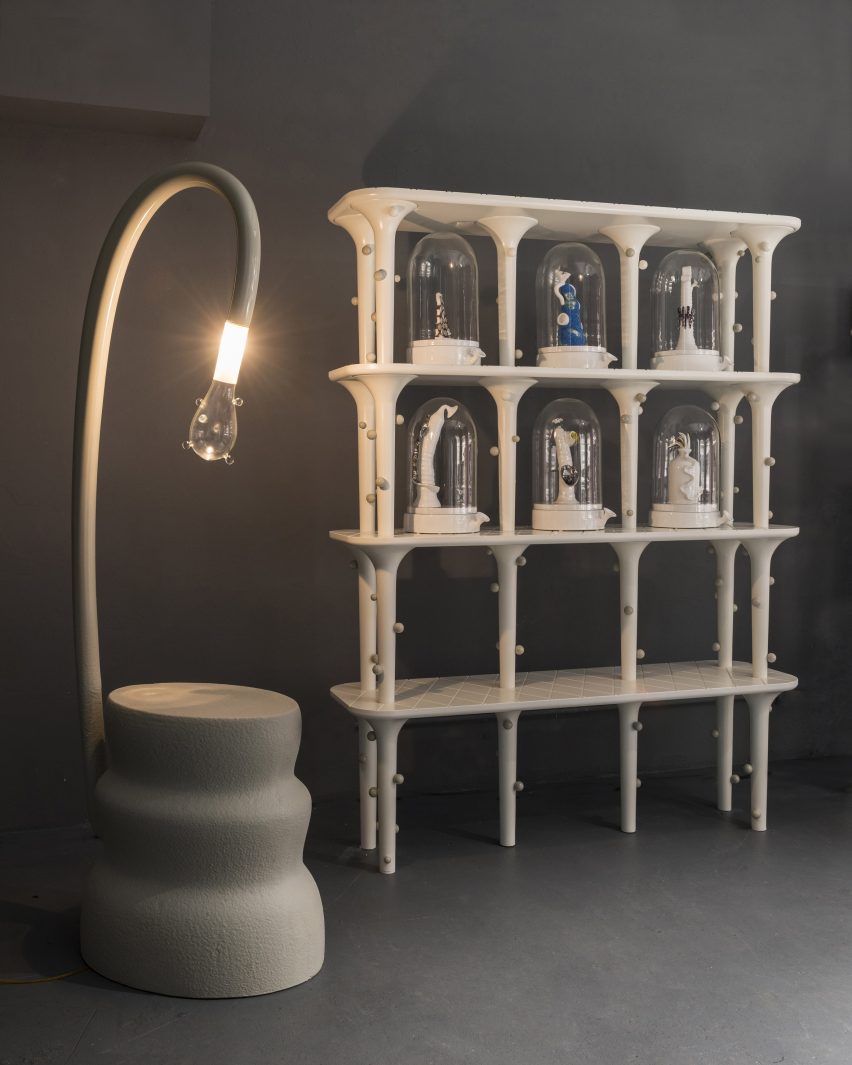
The exhibition is being staged at a satellite venue for London gallery Seeds, a former garage that had been transformed into a cosy hideaway using grey paint and luxurious satin-like curtains.
Inside, Cibic presents 42 scent-making ceramics in a variety of unusual shapes. One is made up of a cluster of circles, while another resembles a mini palm tree. Others are adorned with horns, silver bobbles and crystallised forms.
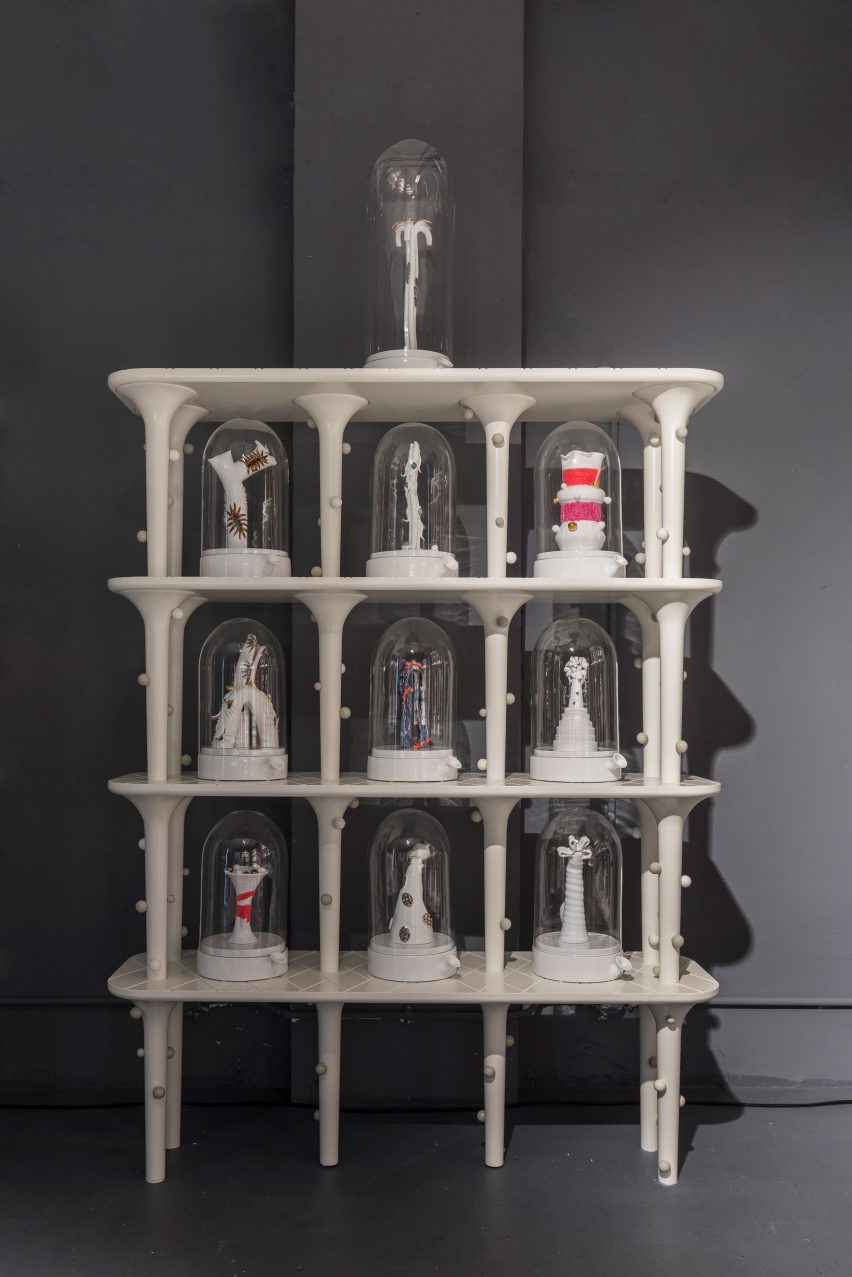
These objects, called Dermatholos, are encased in glass domes with trumpet-shaped spouts at the bottom to let the perfumed scent out.
They stand on custom-made stands that follow the organic aesthetic. They feature curved shelves, set on legs that branch out at the top and are dotted with bobbles. They stack on top of one another, to look like they are "self-growing".
"The furniture of the future will grow as plants and they will produce fruit to feed us every day," Cibic said. "These are just the first prototypes of a new era."
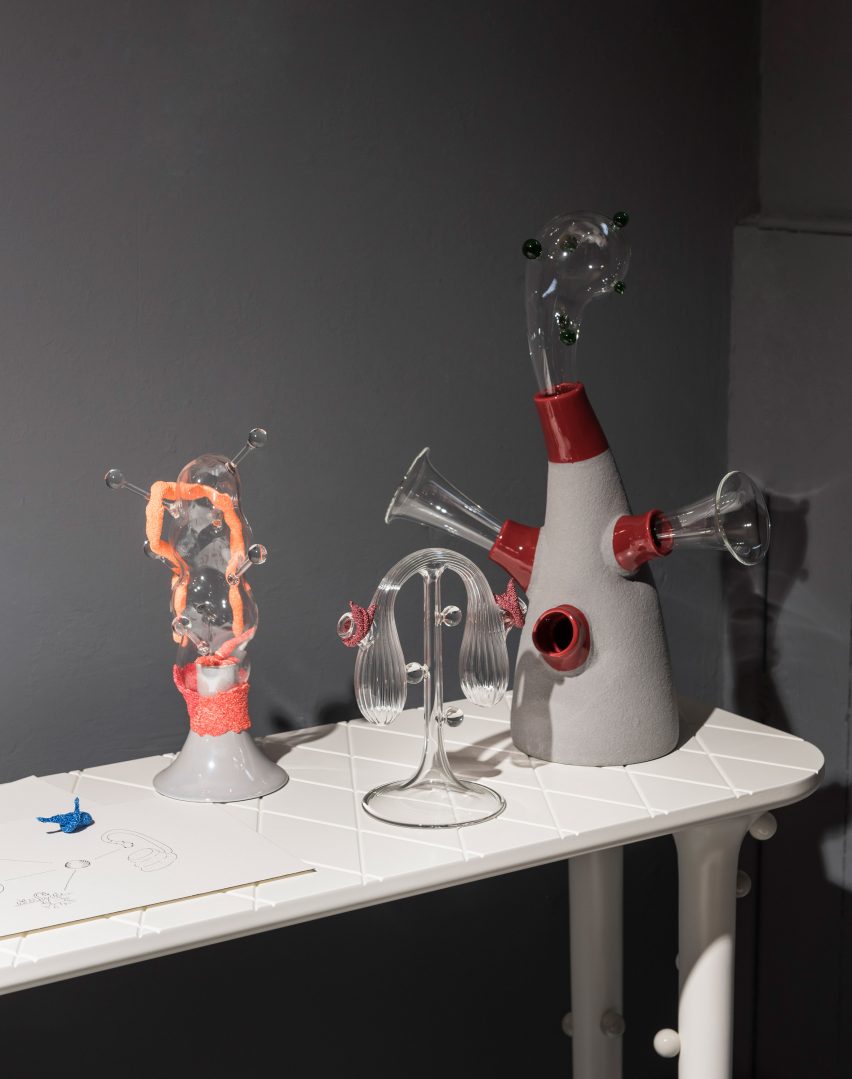
These stacking units are one of several furniture pieces Cibic has designed, along with a low bench and a console.
One of the consoles stands in the middle of the exhibition, displaying 12 larger sculptures. According to Cibic, these 12 pieces are the ones imagined to produce knitwear, rubber, plastic and fruit.
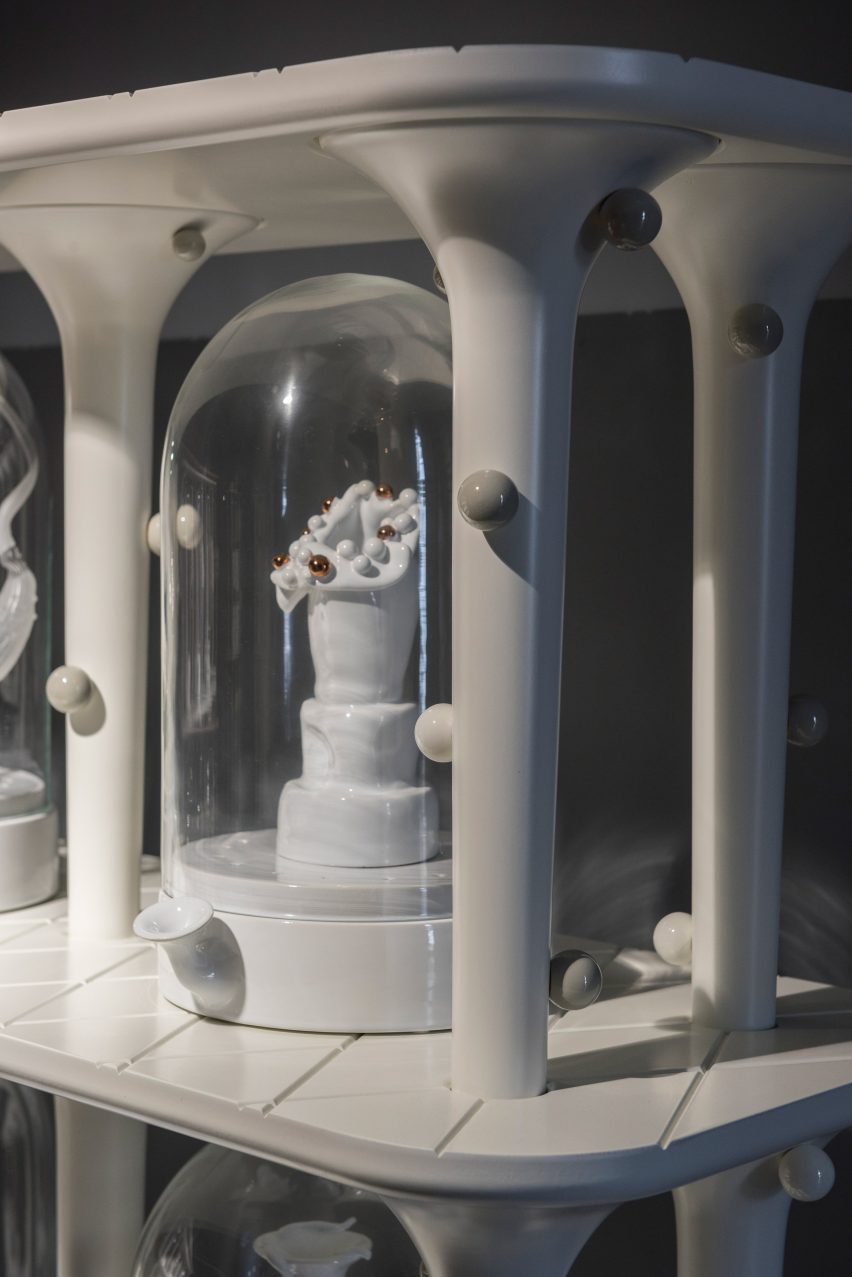
One has a conical yellow base and a bulbous glass top, one features a swollen glass form with sprouting antenna, one boasts drooping bulbs, and one is wrapped in woven fabric.
Cibic has also made three larger sculptures, called Dermamallow, for the production of gum, tar and oxygen.
The largest – a ridged, pale green structure shaped like a tree – has glass containers at the end of its curved branches, which are imagined to fill up with air.
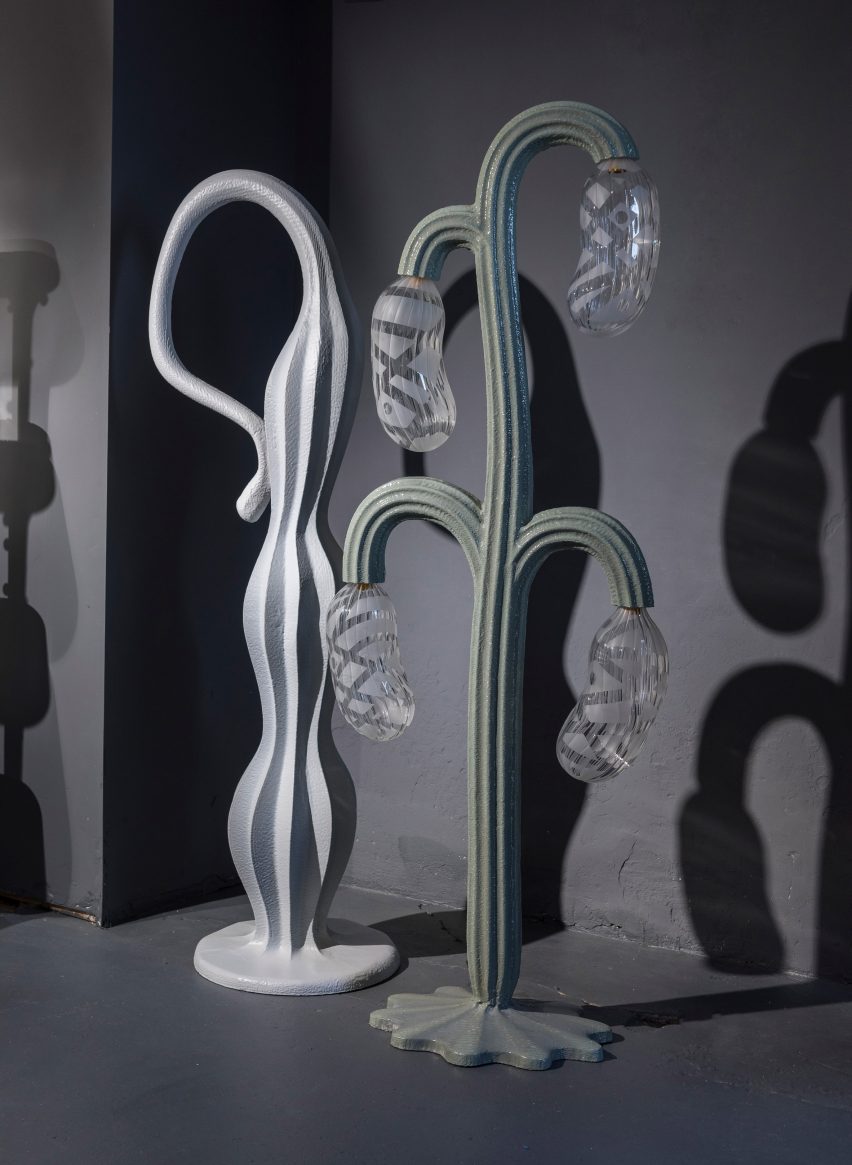
Tar would be produced by the pale grey Dermamallow. It has an undulating shape that tapers towards the top where it makes a tail that loops around to join the middle.
Meanwhile, red balls of bubblegum are formed on the skin of the pale pink Dermamallow, which vaguely resembles an ice cream.
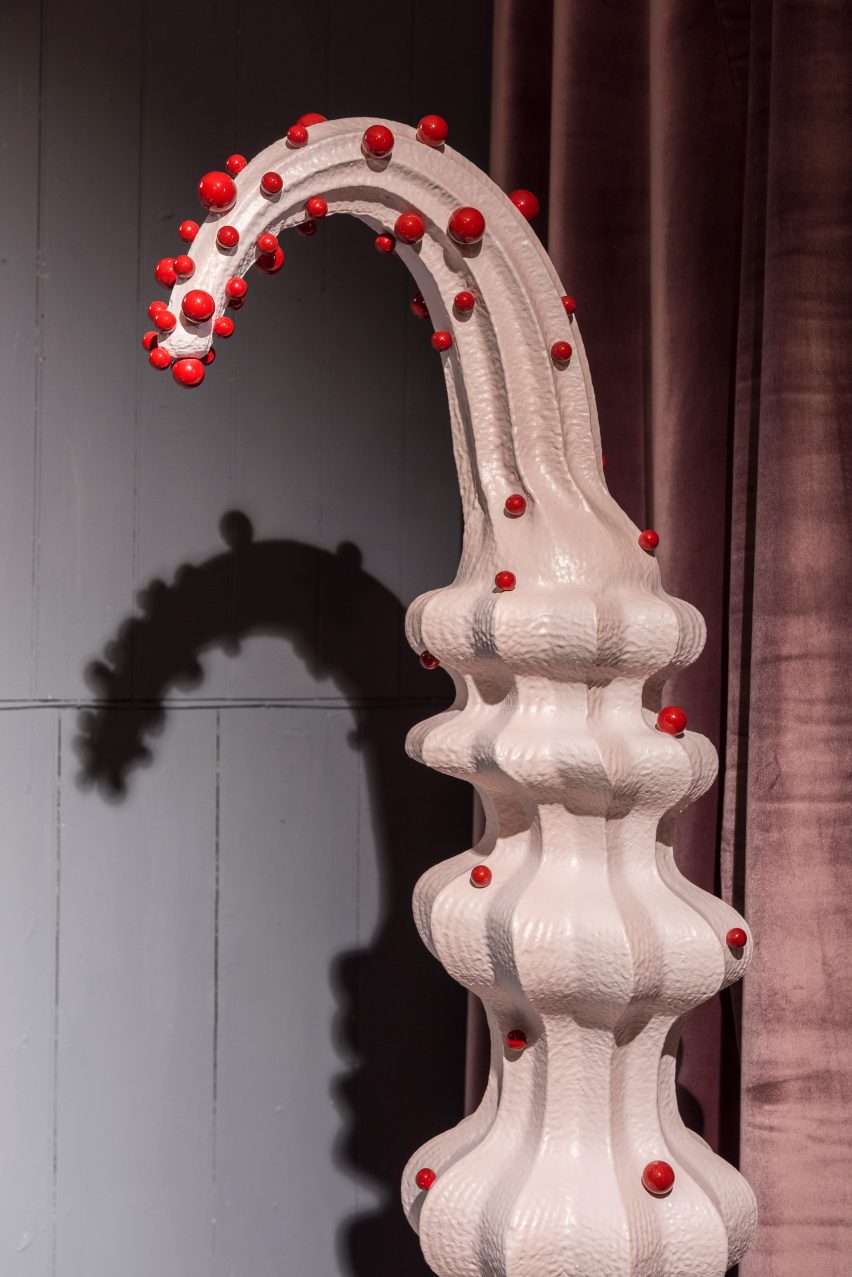
Seeds launched Dermapoliesis ahead of this year's London Design Festival, which runs until 24 September, but it will stay open until 8 October 2017 to coincide with the PAD London art and design fair. It is on show at 4 Thurloe Place Mews, SW7 2HL.
All of Cibic's pieces are available to purchase, ranging in price from £950 to £2000, excluding VAT.
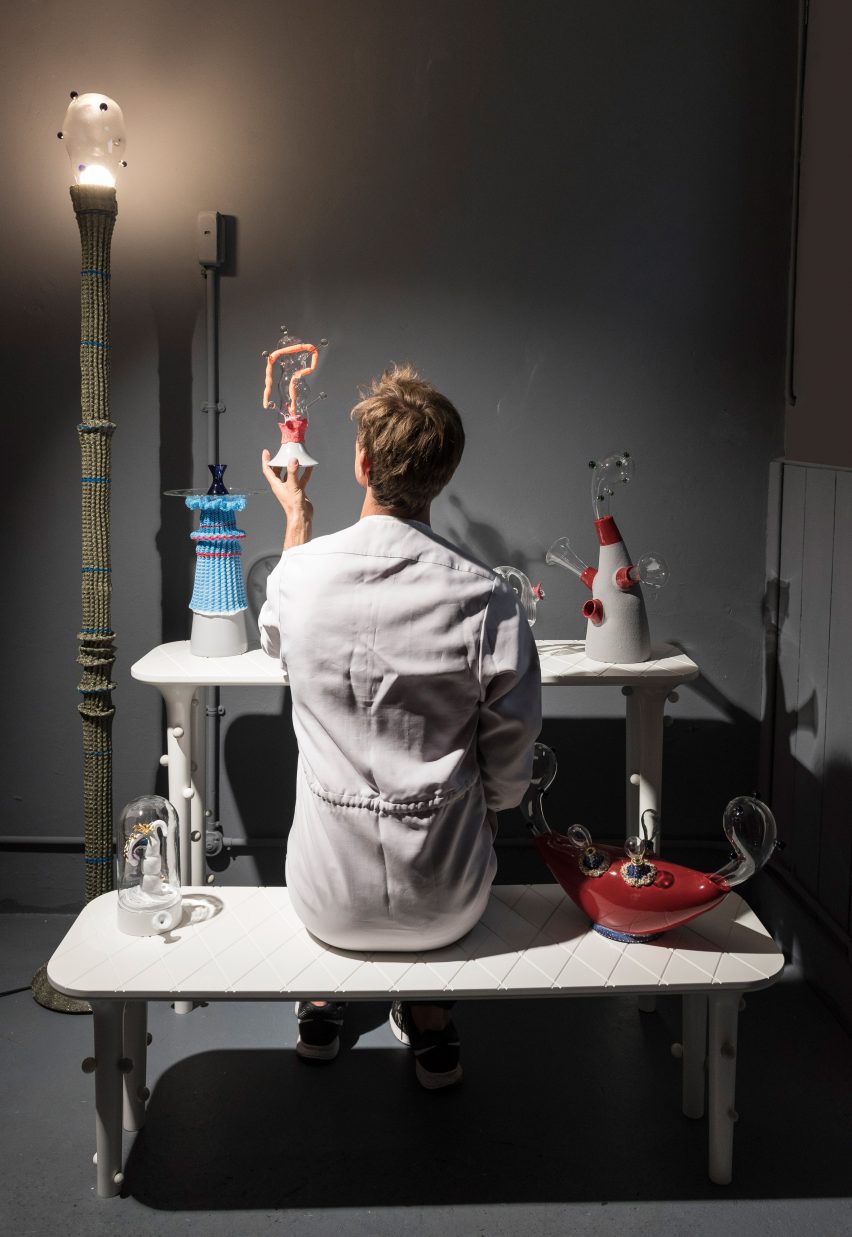
Cibic founded his eponymous design studio in 2007, and has completed a number of bizarrely shaped objects.
Earlier this year, at Milan design week, he unveiled a collection of vases with phallic bumps and curly tails. He has also previously made a bedside lamp that concealed a dildo in its base.